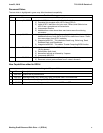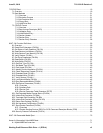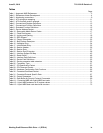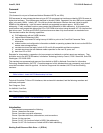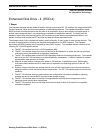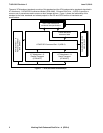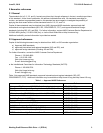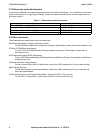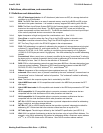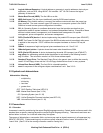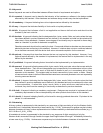
AMERICAN NATIONAL STANDARD BSR INCITS xxx-200x
American National Standard
for Information Technology –
Enhanced Disk Drive - 4 (EDD-4)
Working Draft Enhanced Disk Drive - 4 (EDD-4) 1
1 Scope
This standard assumes that the reader is familiar with the conventional INT 13h interface, the usage of the BIOS
Device Parameter Table, and the basic operation of mass storage devices. This standard describes in detail
BIOS functions and data structures that are used as an abstraction layer to allow higher-level applications to
access mass storage devices in an interface and command-set independent manner. To comply with this
standard, higher-level software shall call the INT functions using the data structures described herein, and
system firmware shall provide the INT functions and data structures described herein.
The storage industry has increased the capacity and functionality of many types of mass storage devices. This
increase in capacity and functionality has required the development of a BIOS interface. This standard
documents the BIOS interface that is supplied by many BIOS vendors. This standard defines solutions to the
following INT 13h BIOS-specific issues:
a) The INT 13h interface has a limit of 528 megabytes (MB);
b) The INT 13h interface allows more than two devices to be attached to a system but has no consistent
method for storing the additional configuration parameters;
c) The INT 13h interface does not define CHS-independent methods for addressing devices. The methods
defined by the INT 13h interface are not device-geometry independent. A different method of address
representation and operation is needed;
d) Methods of data transfer continue to be added to ATA devices. Capabilities such as, DMA modes,
multi-sector data transfers and PIO modes are not reported to the operating system via the INT 13h
interface;
e) Systems require more than two storage devices, and with this requirement comes the requirement to
assign the order in which the devices are to be accessed. The INT 13h interface does not provide this
capability;
f) The INT 13h interface does not make location and configuration information available to operating
systems that do not use the BIOS to access mass storage devices;
g) The INT 13h interface does not provide a linkage between the BIOS device assignments on the
operating system device letter assignments;
h) The INT 13h interface does not use data structures that apply to both IA-32 and IA-64 compatible
architecture systems.



